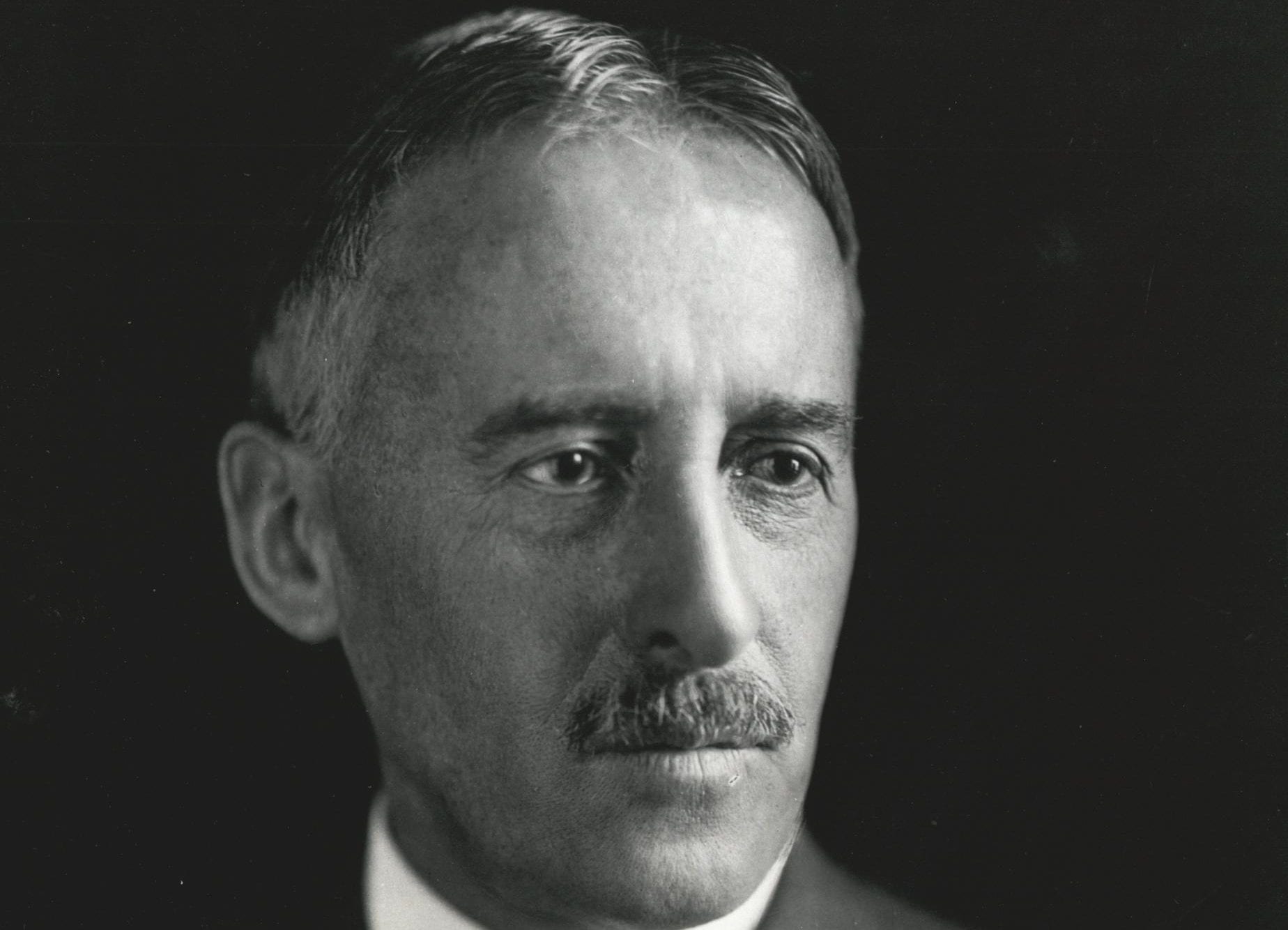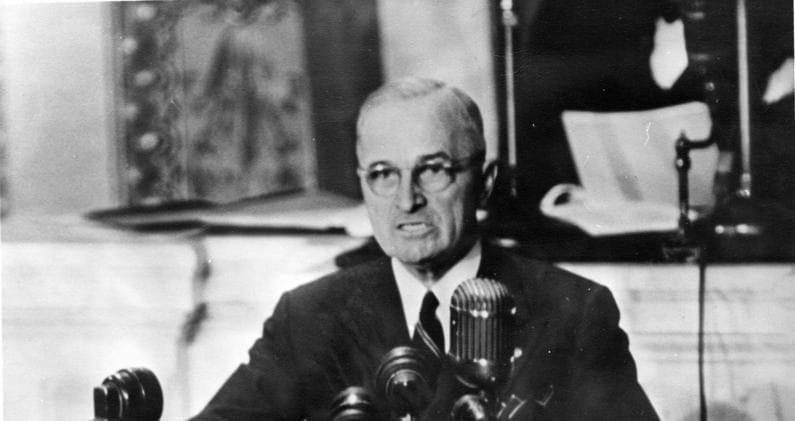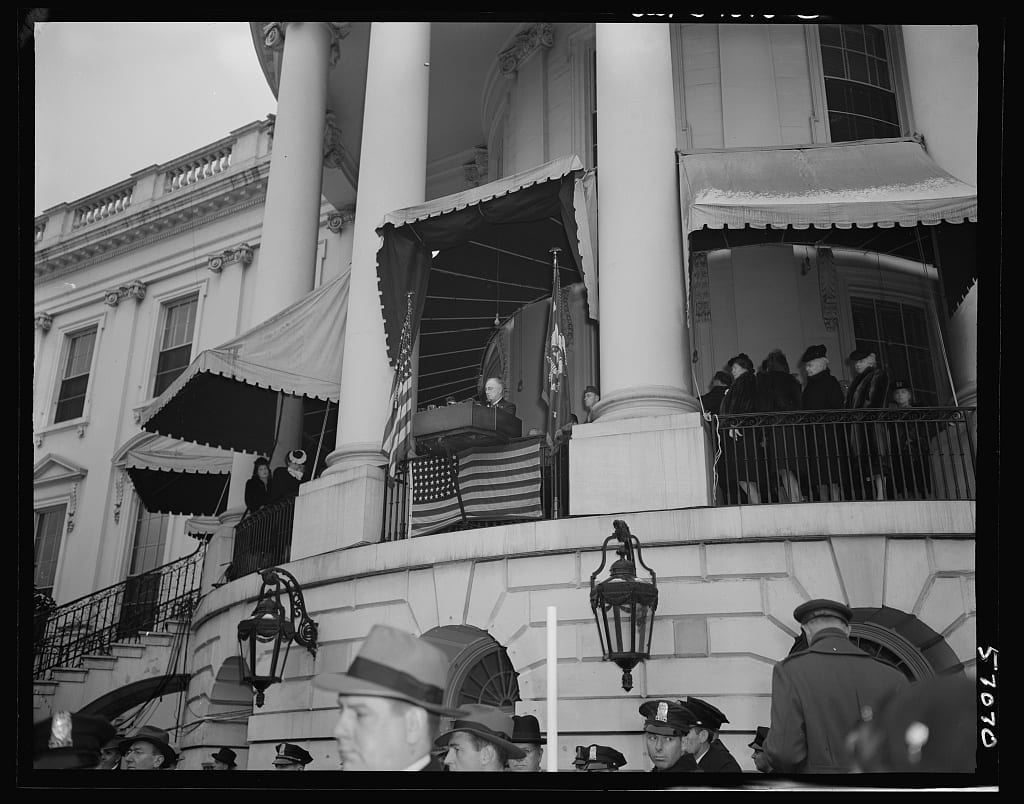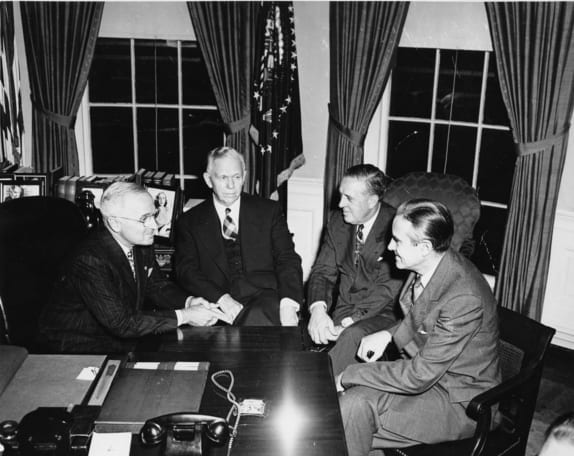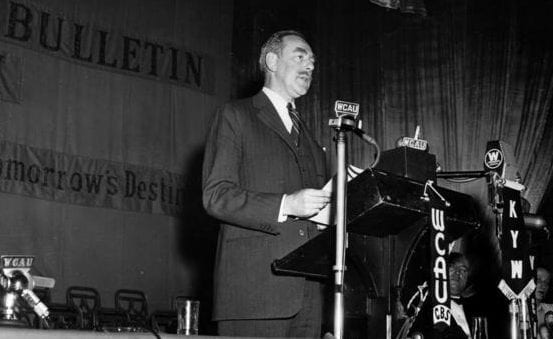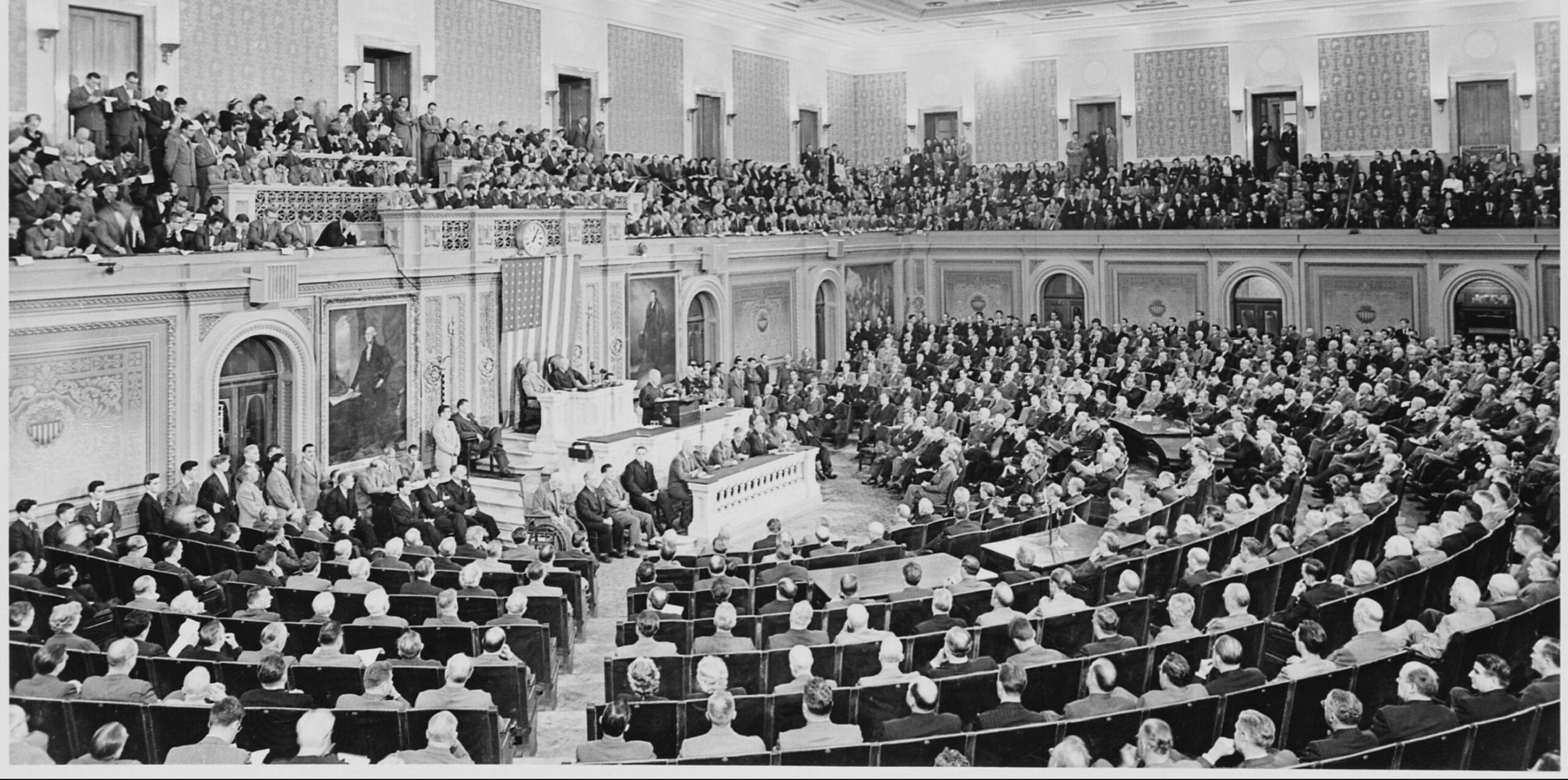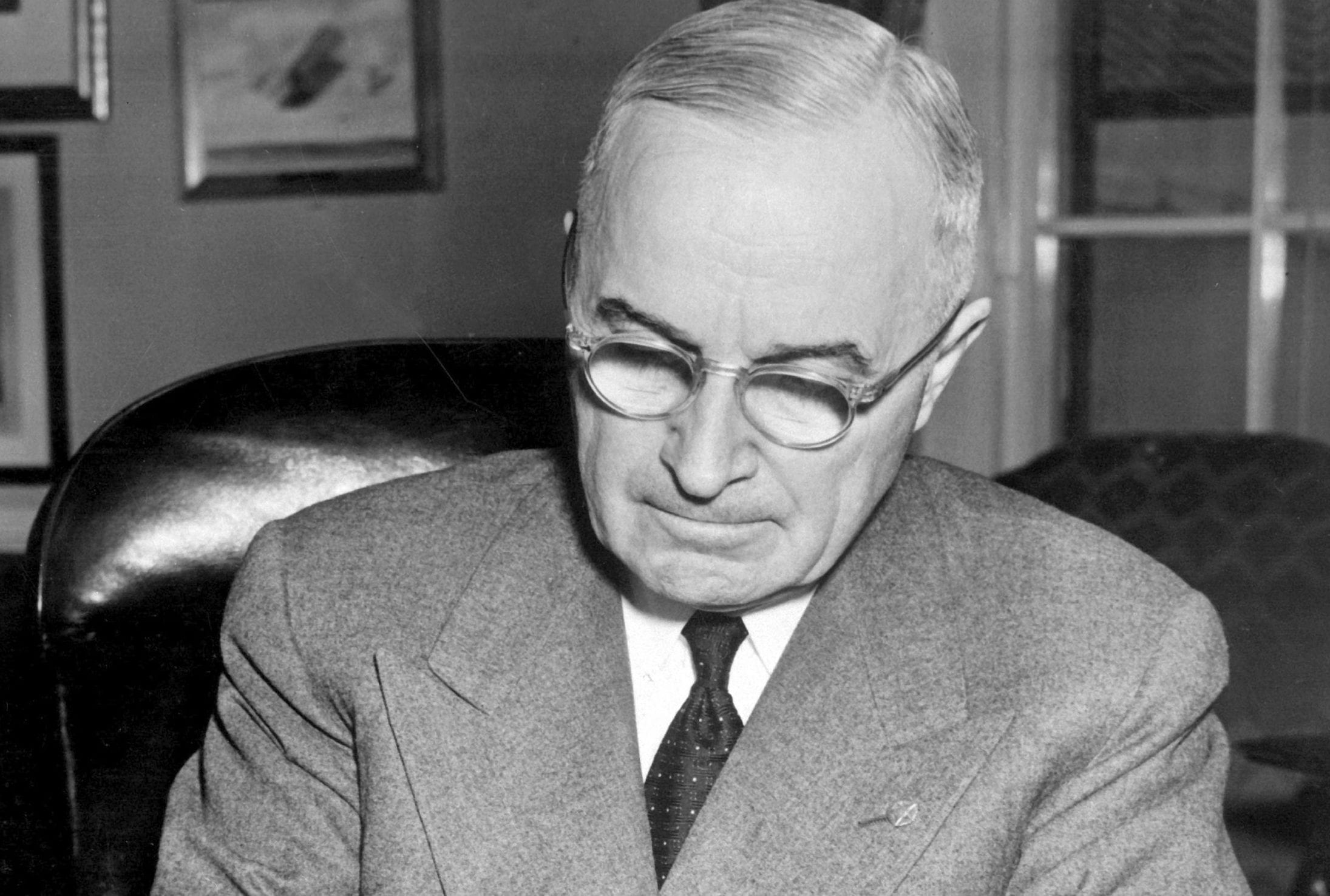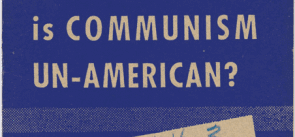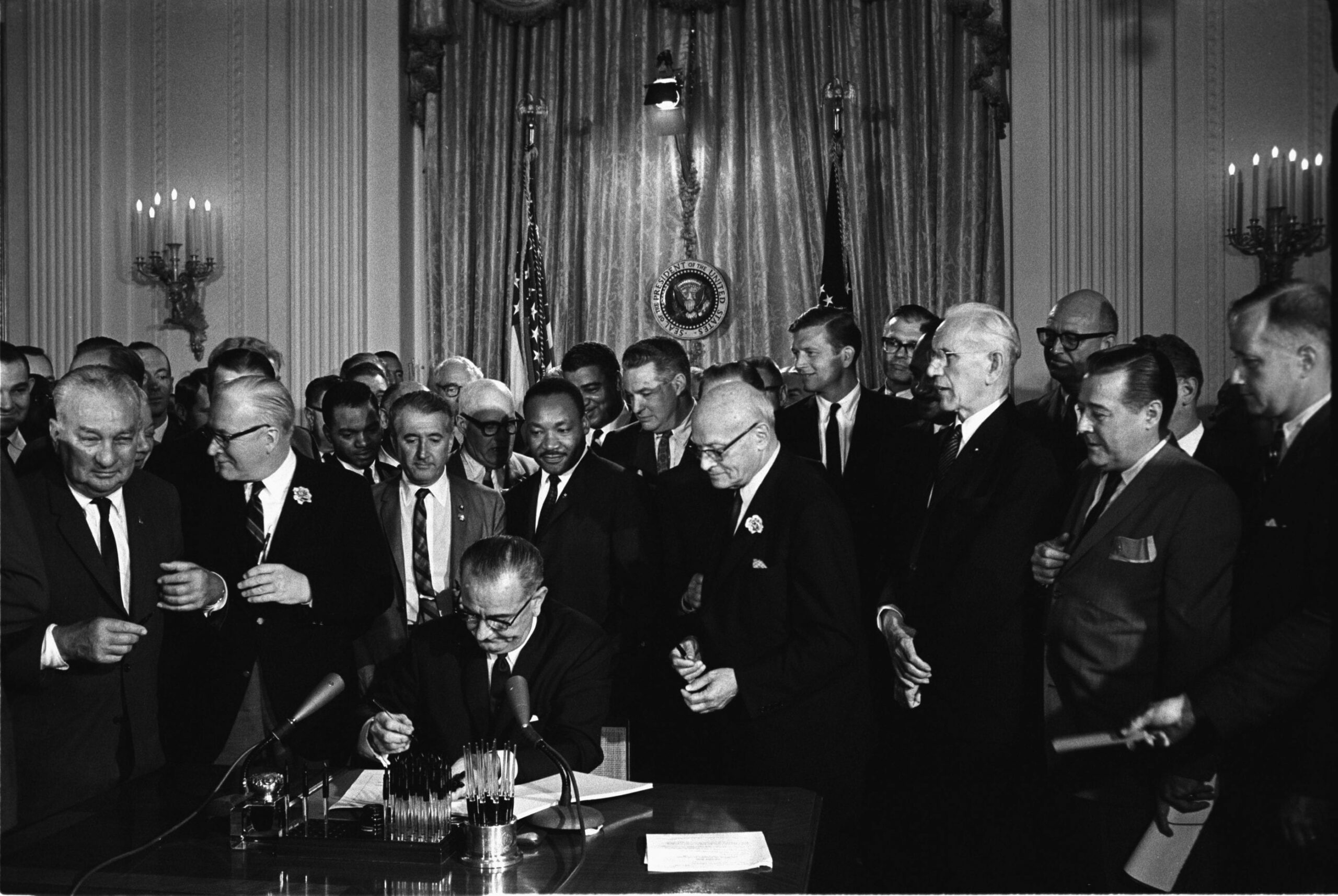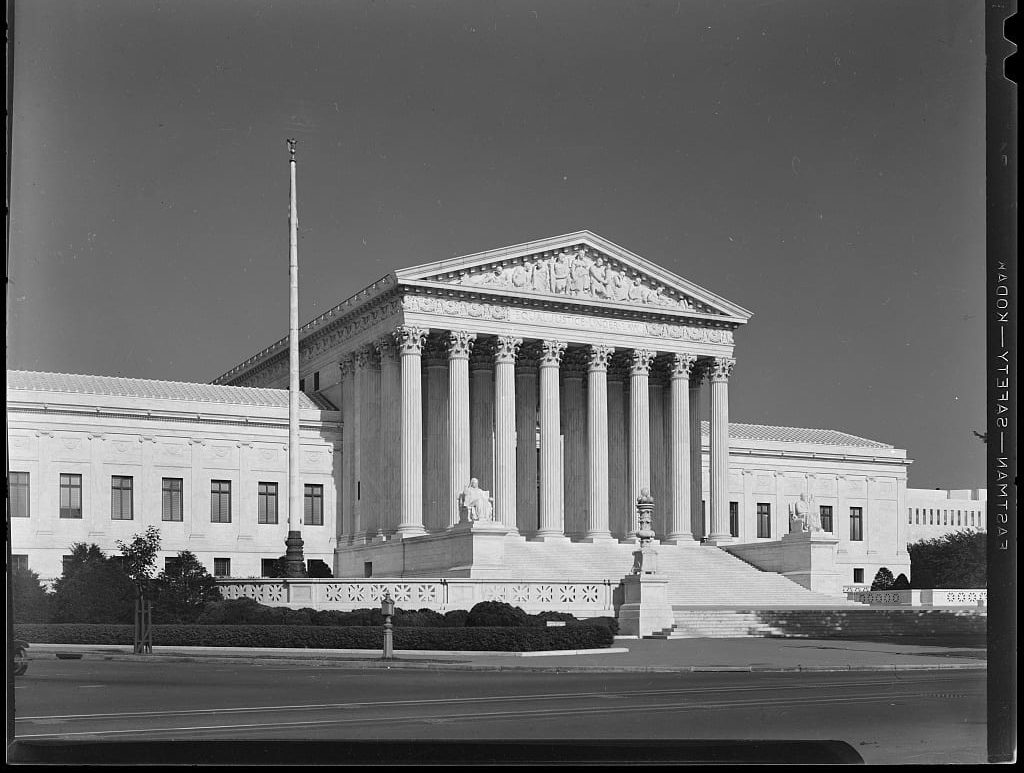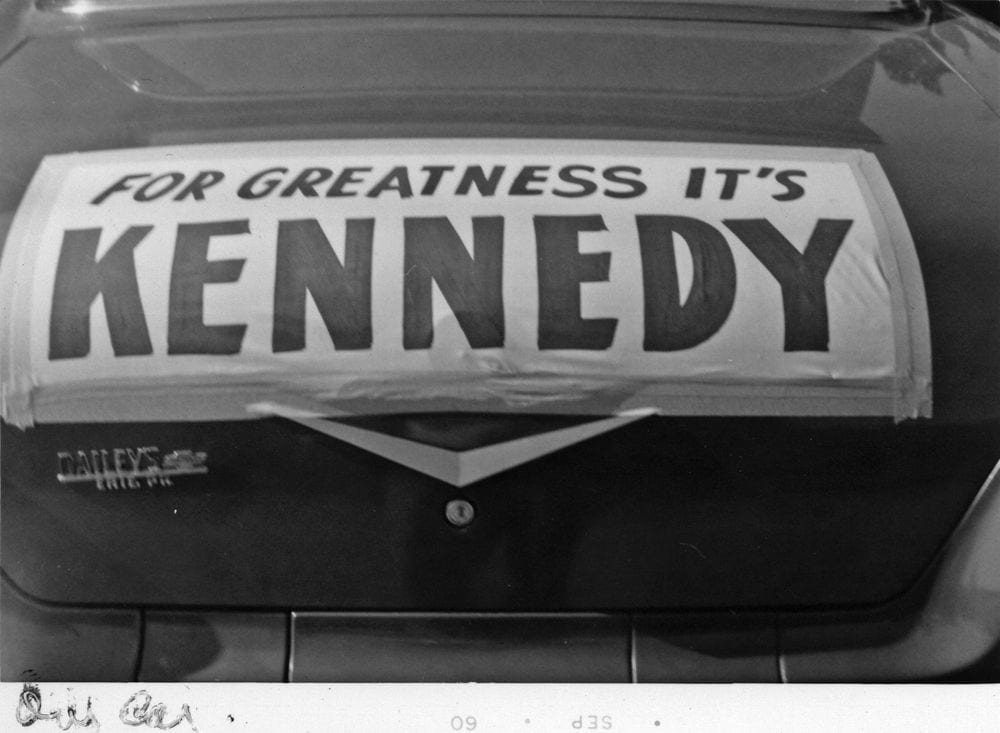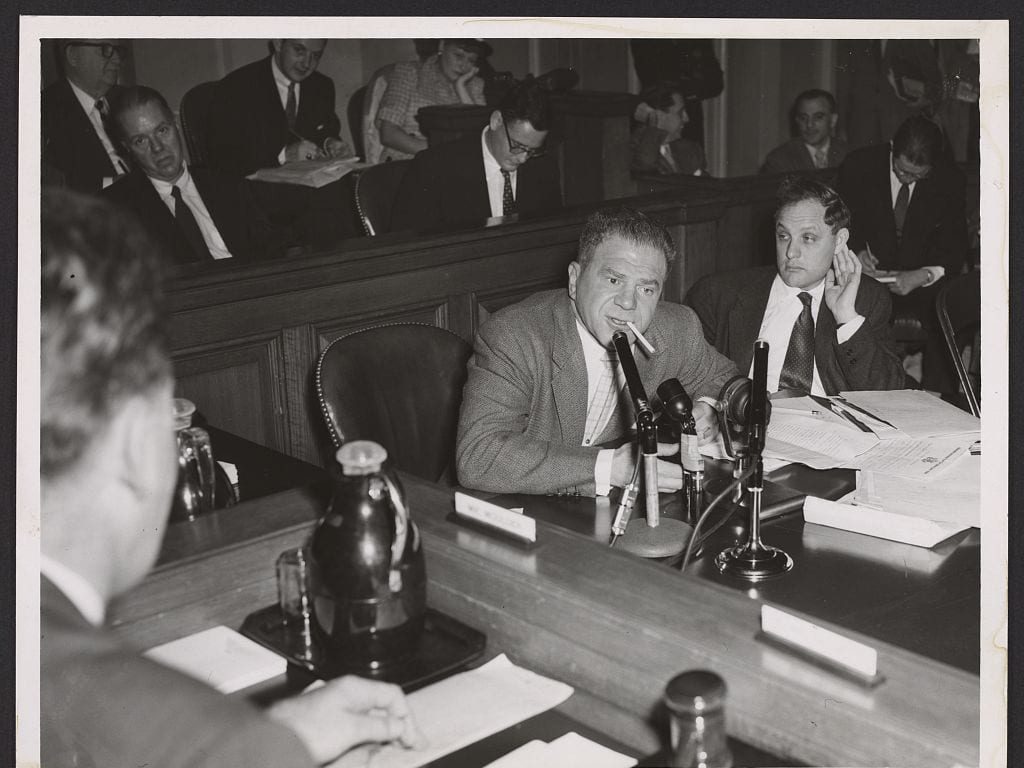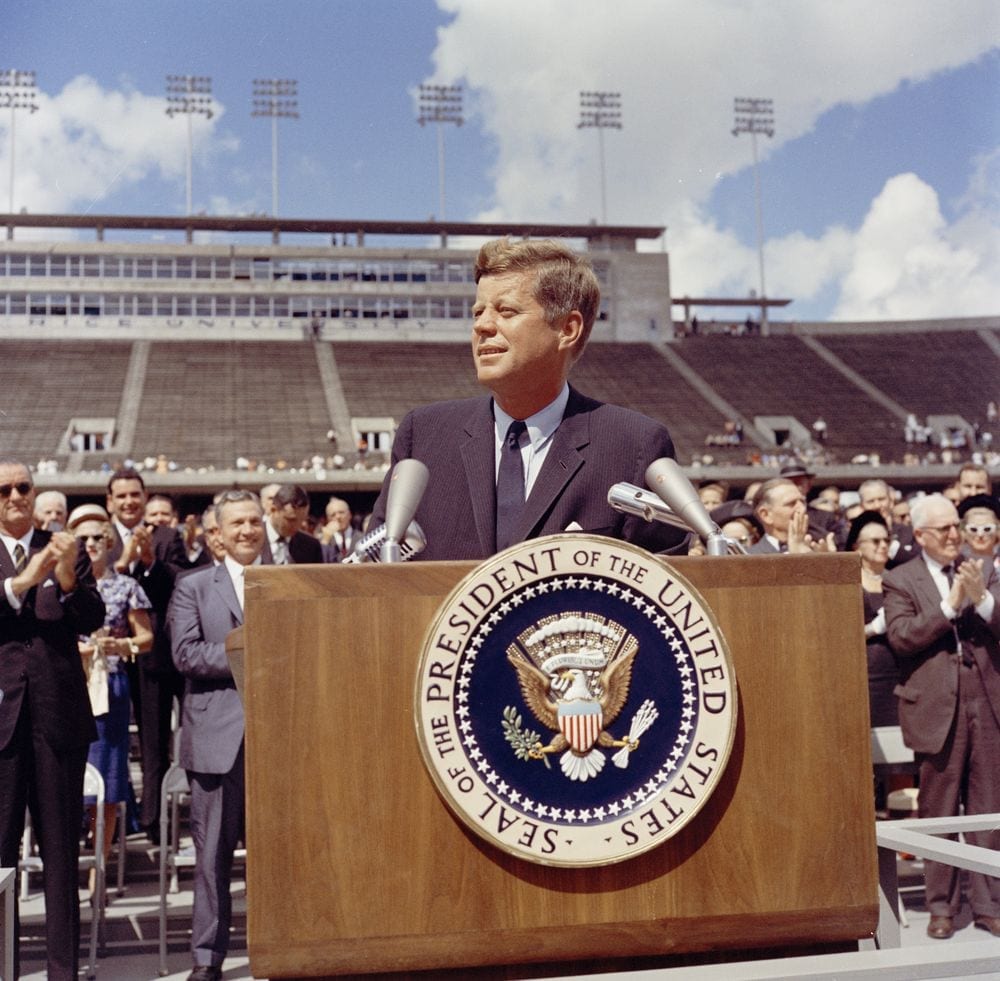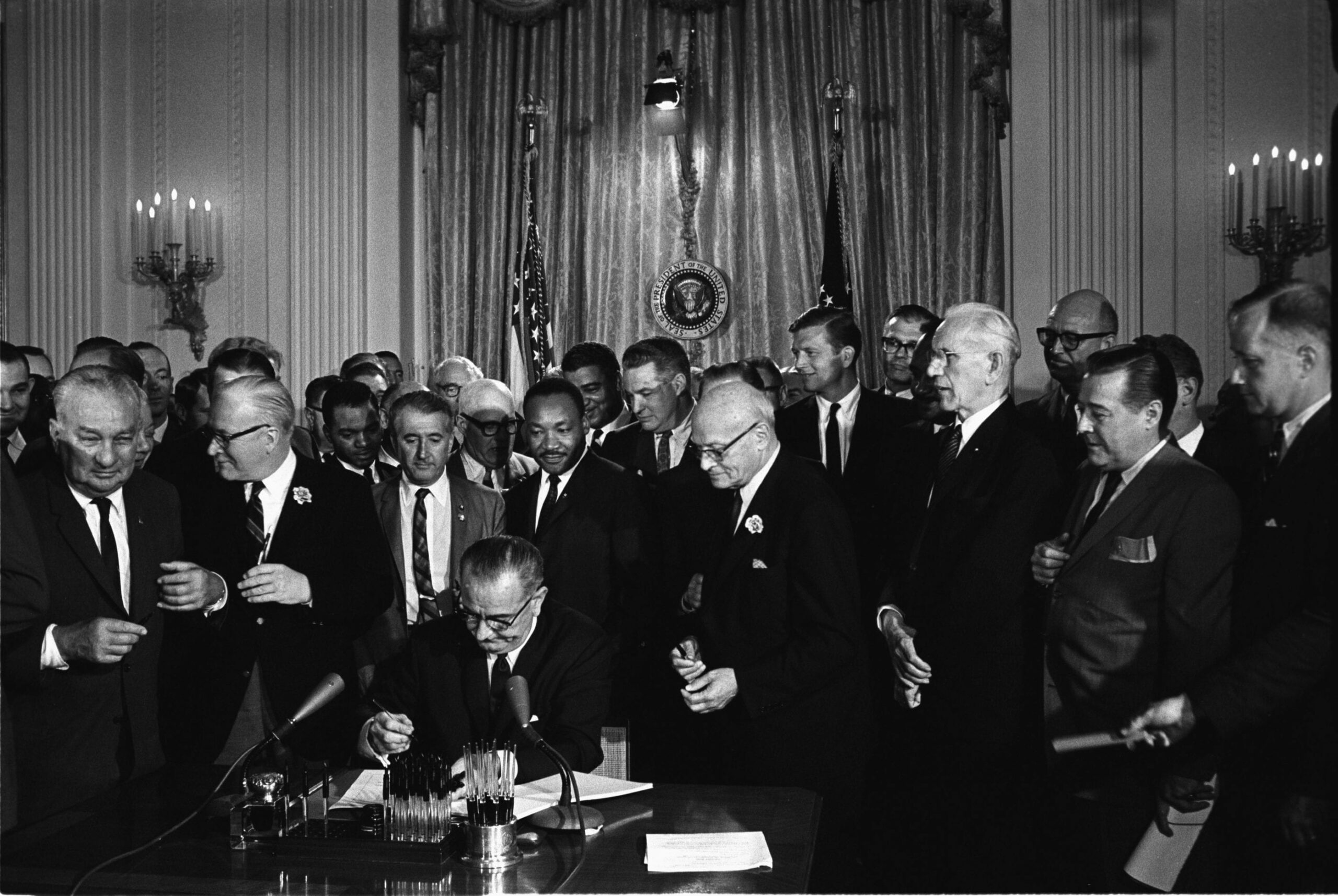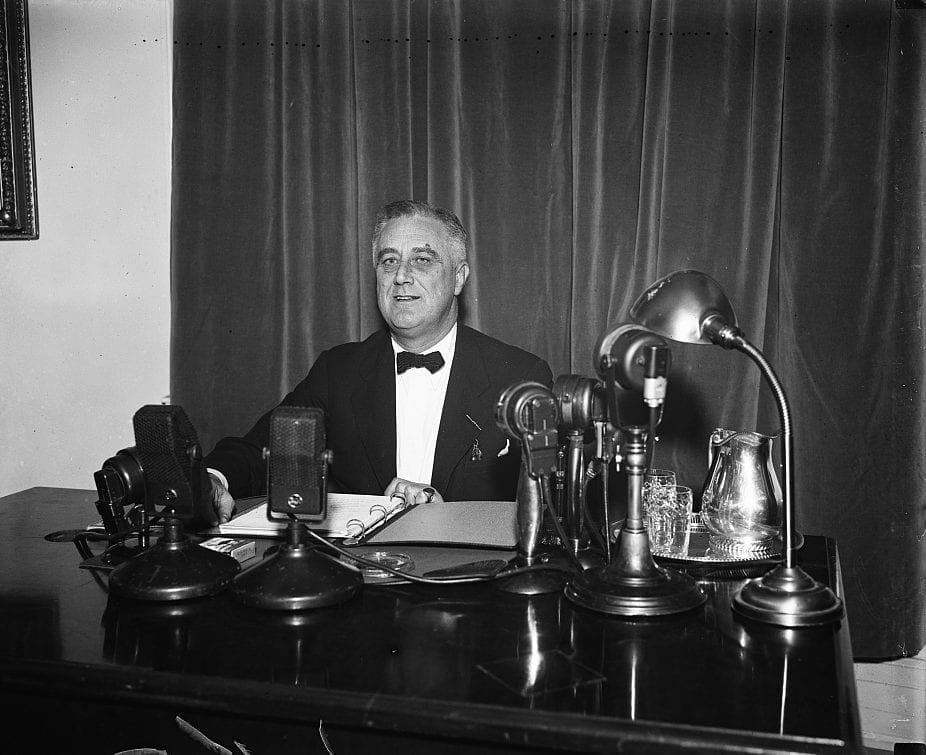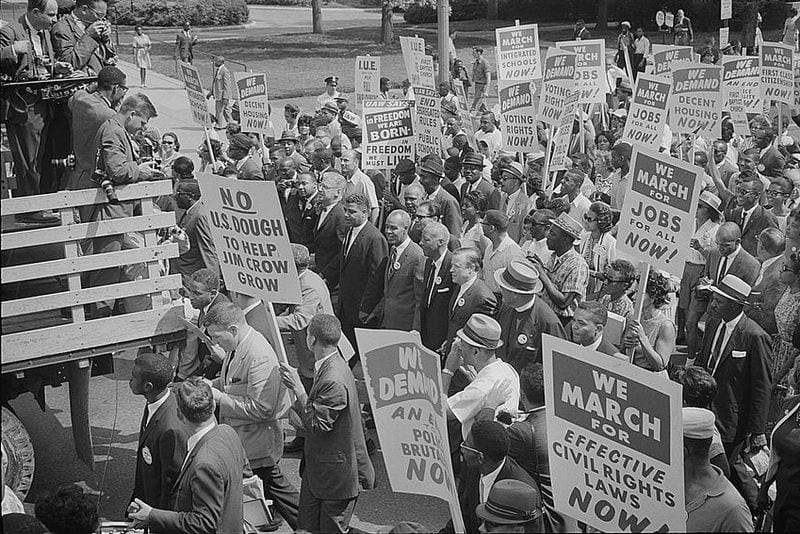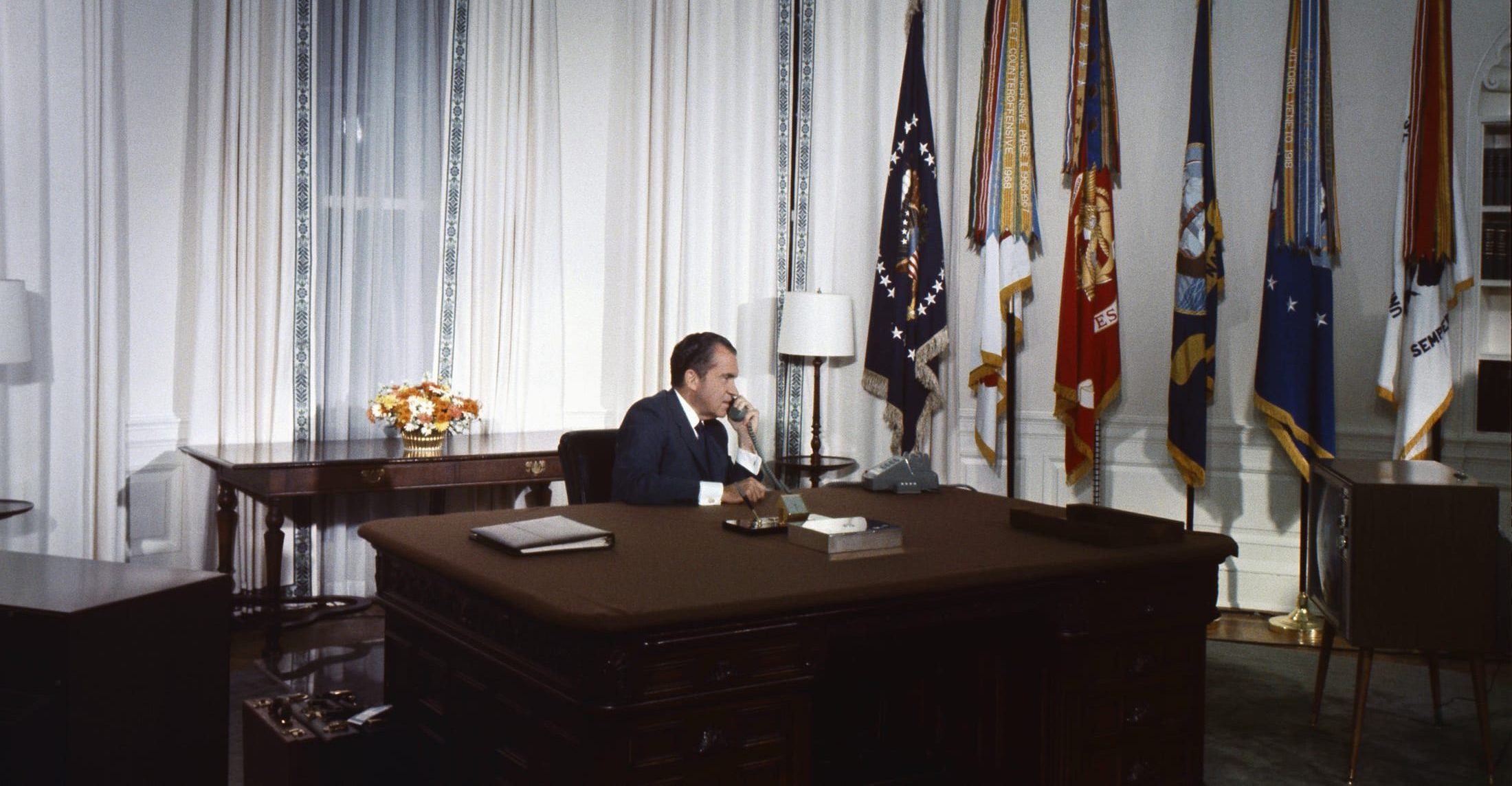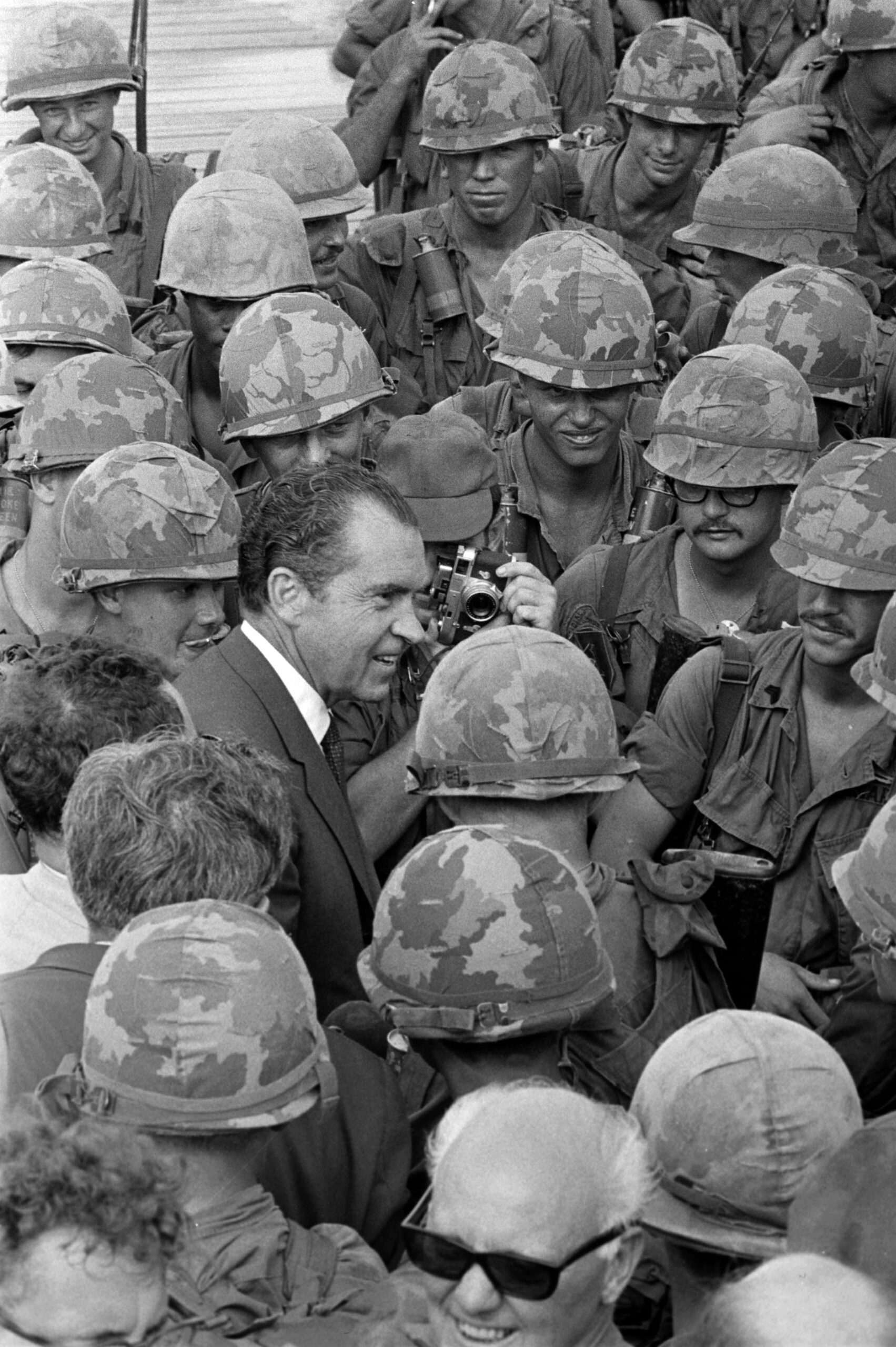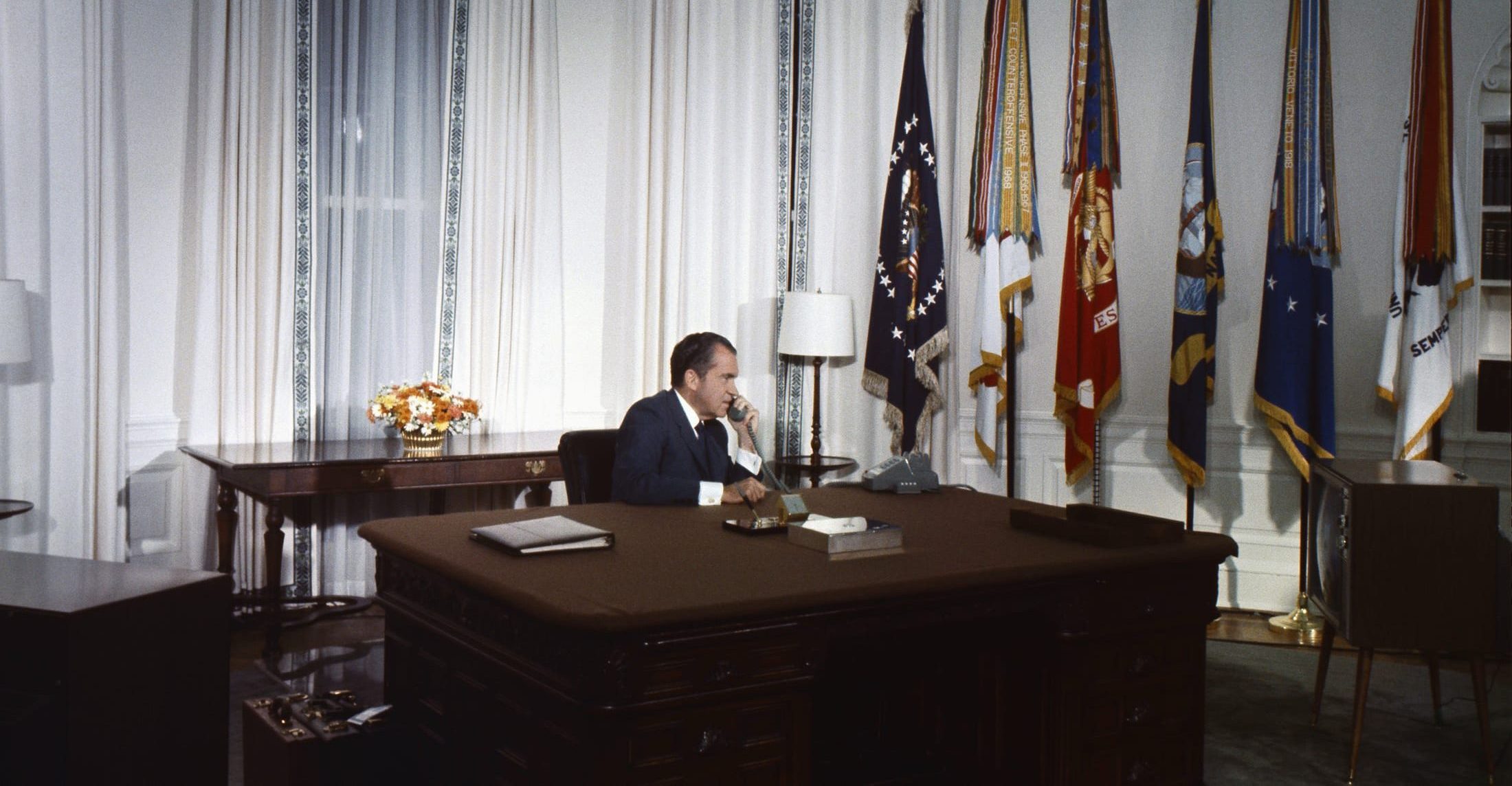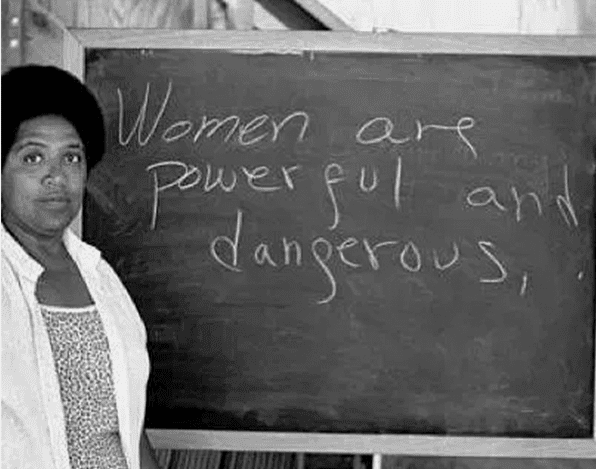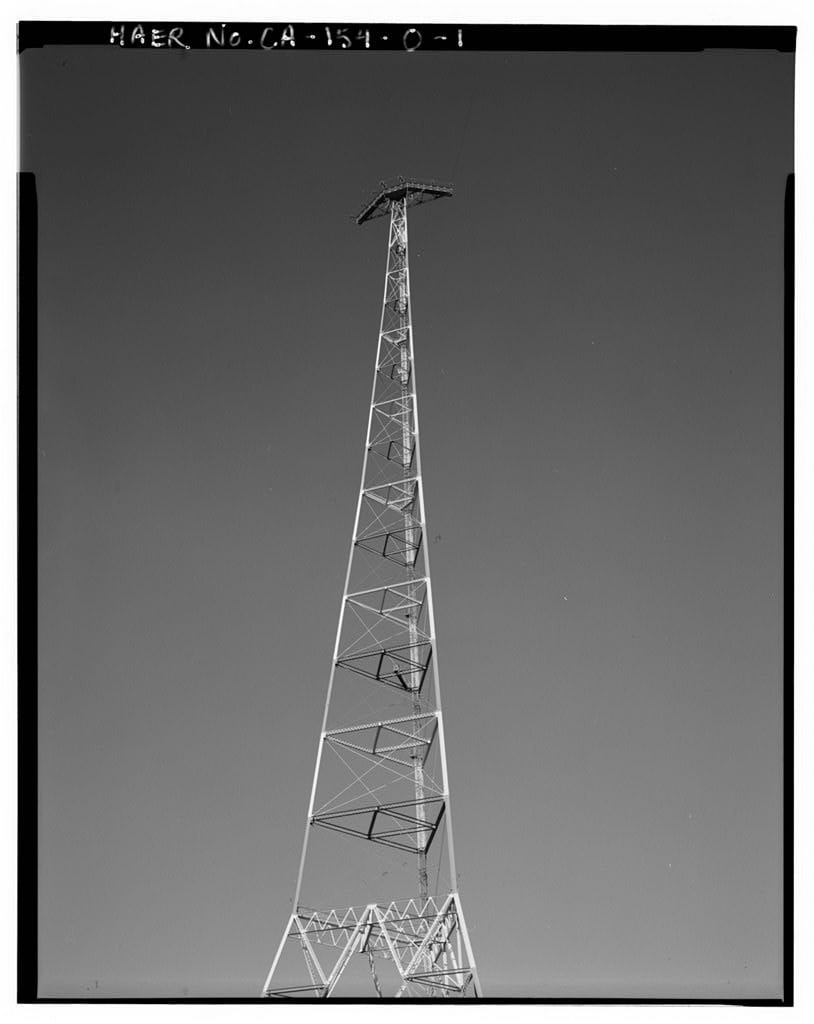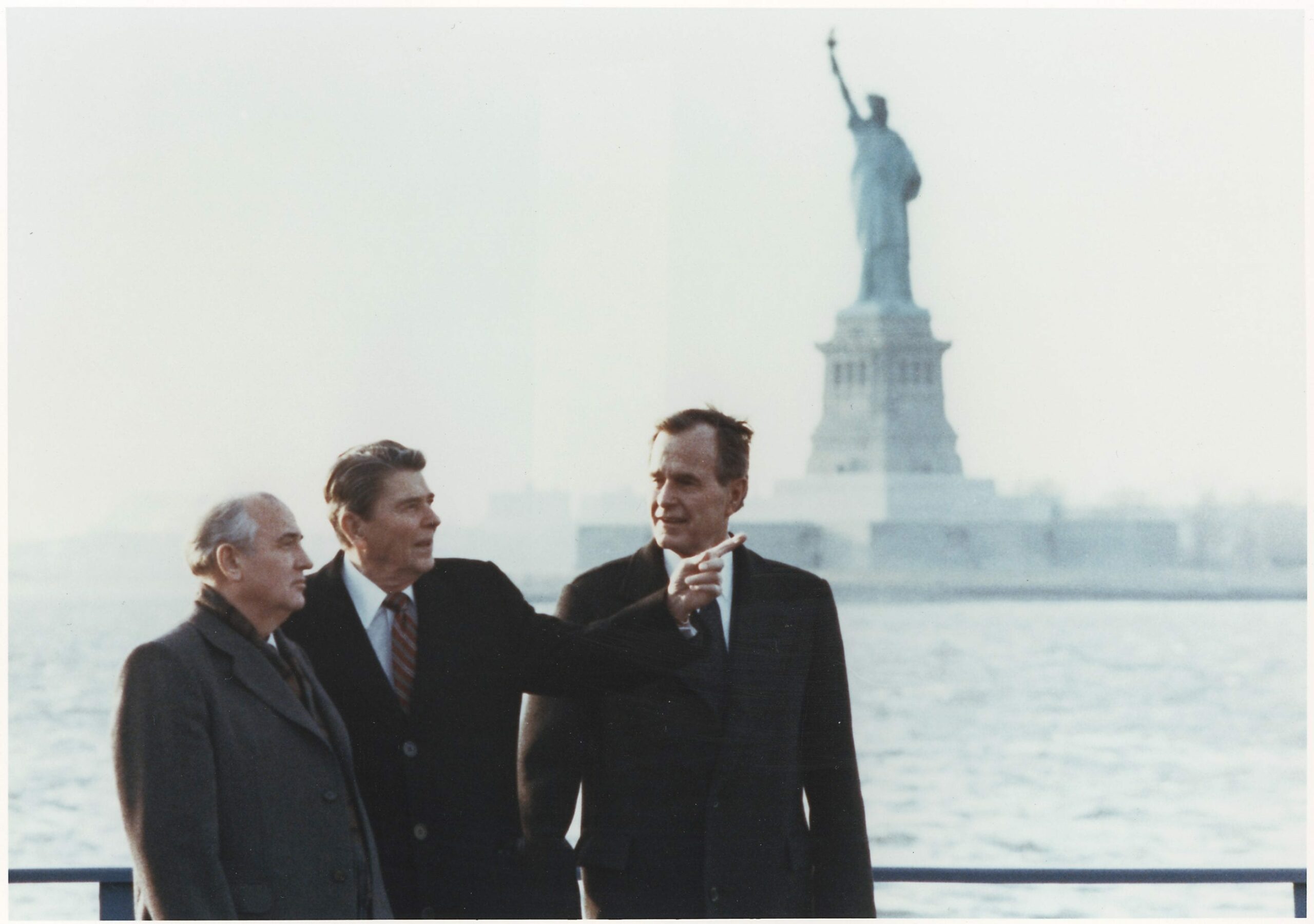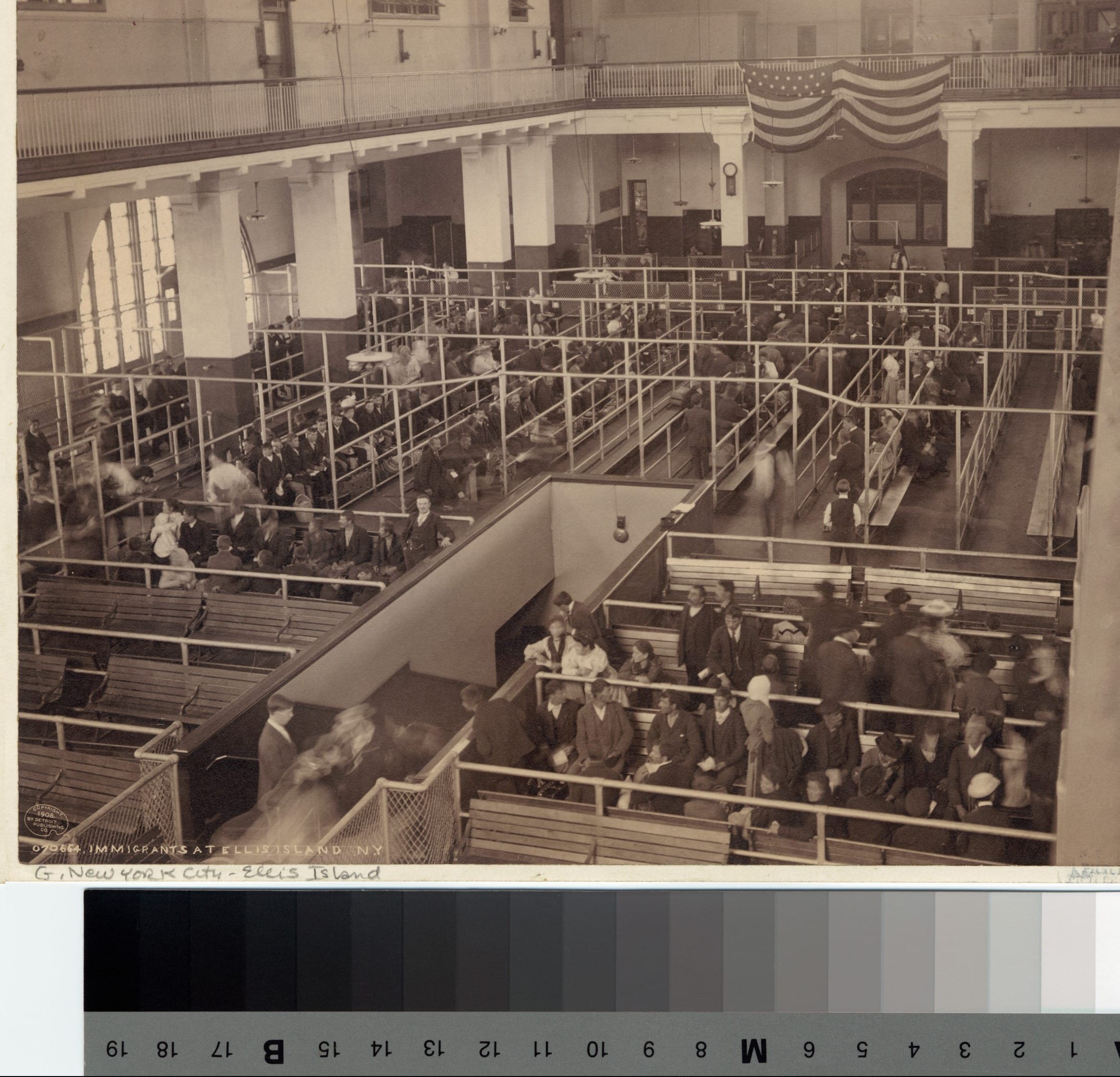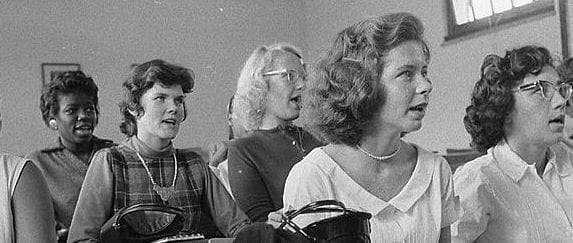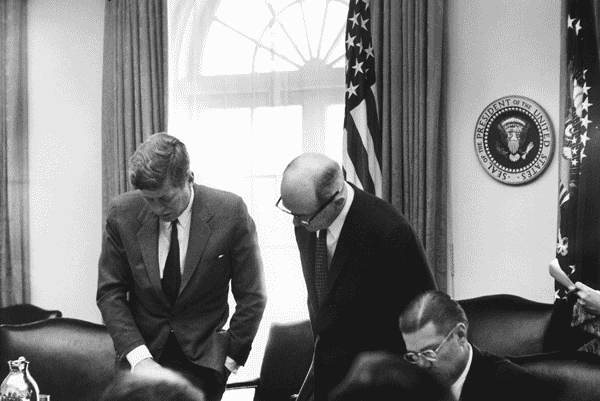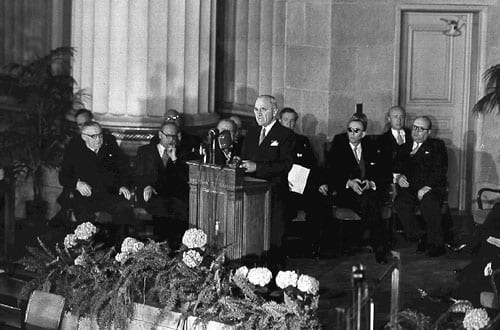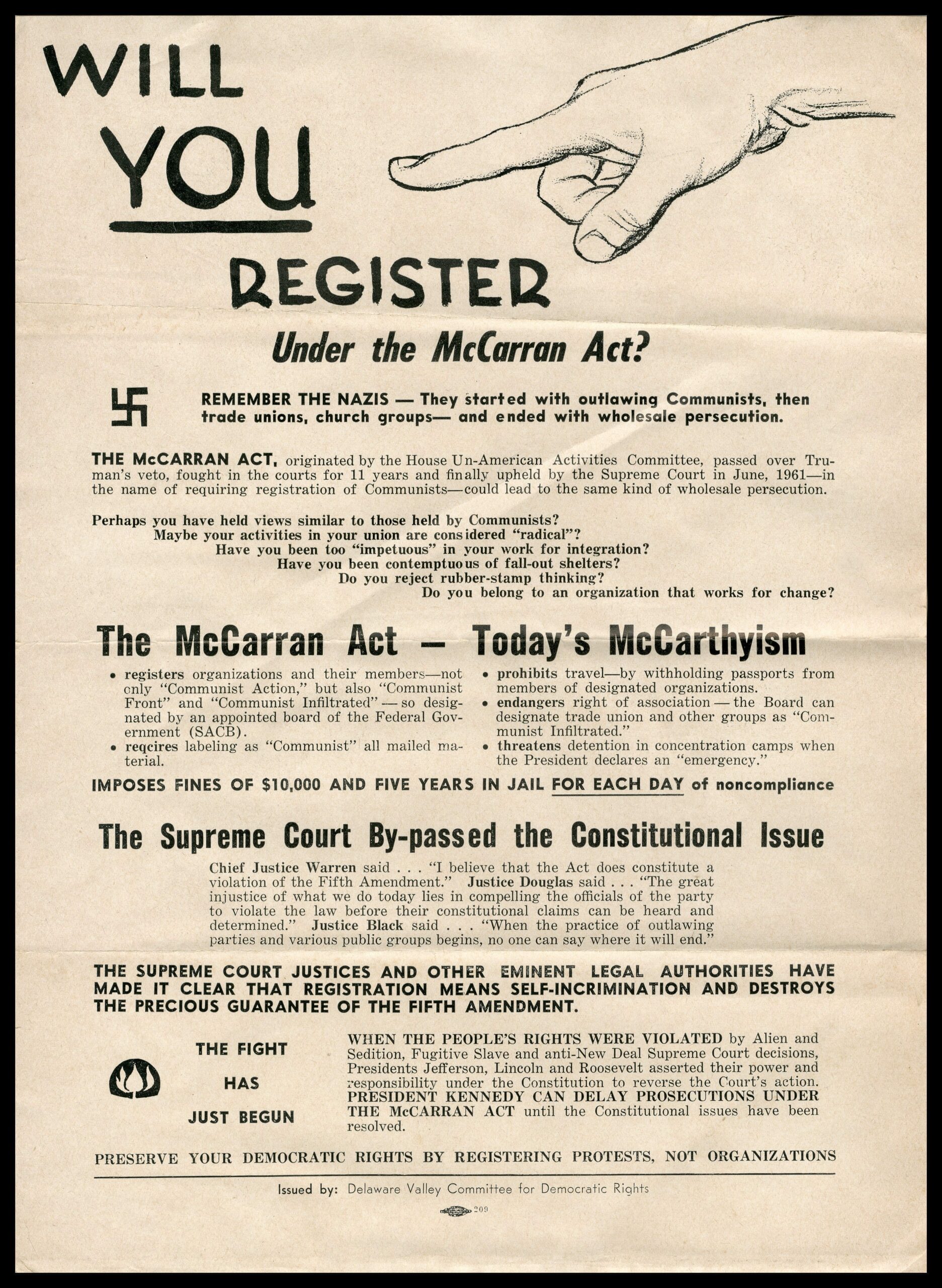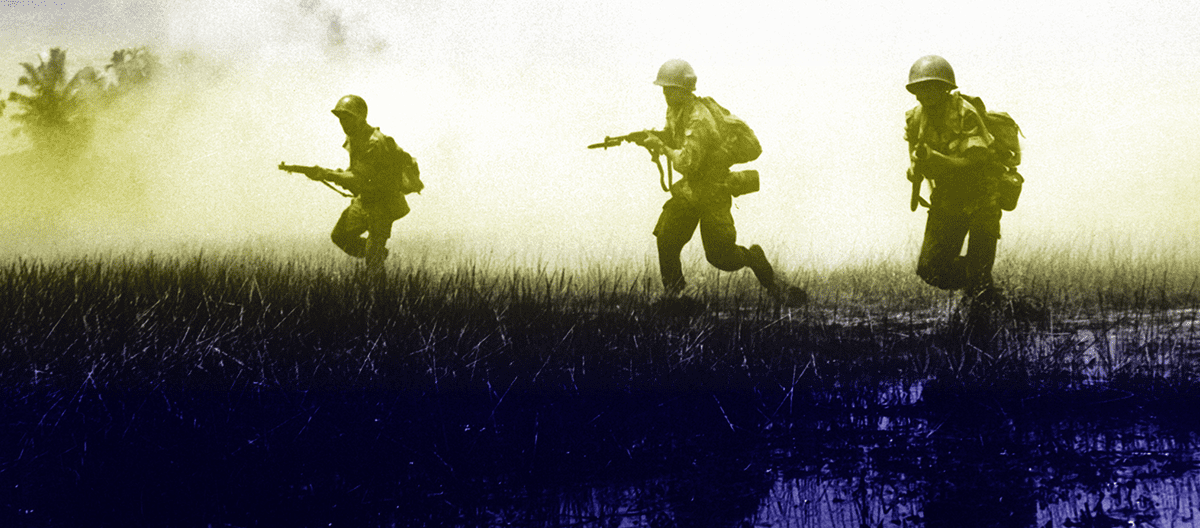
No study questions
No related resources
Under 3210 of the New York Education Law and the regulations thereunder, New York City permits its public schools to release students during school hours, on written requests of their parents, so that they may leave the school buildings and grounds and go to religious centers for religious instruction or devotional exercises. The same section makes school attendance compulsory; students not released stay in the classrooms; and the churches report to the schools the names of children released from public schools who fail to report for religious instruction. The program involves neither religious instruction in public schools nor the expenditure of public funds. Held: This program does not violate the First Amendment, made applicable to the States by the Fourteenth Amendment. McCollum v. Board of Education, 333 U.S. 203 , distinguished.
(a) By this system, New York has neither prohibited the “free exercise” of religion nor made a law “respecting an establishment of religion” within the meaning of the First Amendment.
(b) There is no evidence in the record in this case to support a conclusion that the system involves the use of coercion to get public school students into religious classrooms.
MR. JUSTICE DOUGLAS delivered the opinion of the Court.
New York City has a program which permits its public schools to release students during the school day so that they may leave the school buildings and school grounds and go to religious centers for religious instruction or devotional exercises. A student is released on written request of his parents. Those not released stay in the classrooms. The churches make weekly reports to the schools, sending a list of children who have been released from public school but who have not reported for religious instruction.
This “released time” program involves neither religious instruction in public school classrooms nor the expenditure of public funds. All costs, including the application blanks, are paid by the religious organizations. The case is therefore unlike McCollum v. Board of Education, 333 U.S. 203 , which involved a “released time” program from Illinois. In that case the classrooms were turned over to religious instructors. We accordingly held that the program violated the First Amendment which (by reason of the Fourteenth Amendment) prohibits the states from establishing religion or prohibiting its free exercise.
Appellants, who are taxpayers and residents of New York City and whose children attend its public schools, challenge the present law, contending it is in essence not different from the one involved in the McCollum case. Their argument, stated elaborately in various ways, reduces itself to this: the weight and influence of the school is put behind a program for religious instruction; public school teachers police it, keeping tab on students who are released; the classroom activities come to a halt while the students who are released for religious instruction are on leave; the school is a crutch on which the churches are leaning for support in their religious training; without the cooperation of the schools this “released time” program, [343 U.S. 306, 310] like the one in the McCollum case, would be futile and ineffective. The New York Court of Appeals sustained the law against this claim of unconstitutionality. The case is here on appeal. . . .
. . . . our problem reduces itself to whether New York by this system has either prohibited the “free exercise” of religion or has made a law “respecting an establishment of religion” within the meaning of the First Amendment.
It takes obtuse reasoning to inject any issue of the “free exercise” of religion into the present case. No one is forced to go to the religious classroom and no religious exercise or instruction is brought to the classrooms of the public schools. A student need not take religious instruction. He is left to his own desires as to the manner or time of his religious devotions, if any.
There is a suggestion that the system involves the use of coercion to get public school students into religious classrooms. There is no evidence in the record before us that supports that conclusion. The present record indeed tells us that the school authorities are neutral in this regard and do no more than release students whose parents so request. If in fact coercion were used, if it were established that any one or more teachers were using their office to persuade or force students to take the religious instruction, a wholly different case would be presented. Hence we put aside that claim of coercion both as respects the “free exercise” of religion and “an establishment of religion” within the meaning of the First Amendment.
Moreover, apart from that claim of coercion, we do not see how New York by this type of “released time” program has made a law respecting an establishment of religion within the meaning of the First Amendment. There is much talk of the separation of Church and State in the history of the Bill of Rights and in the decisions clustering around the First Amendment. See Everson v. Board of Education, 330 U.S. 1 ; McCollum v. Board of Education, supra. There cannot be the slightest doubt that the First Amendment reflects the philosophy that Church and State should be separated. And so far as interference with the “free exercise” of religion and an “establishment” of religion are concerned, the separation must be complete and unequivocal. The First Amendment within the scope of its coverage permits no exception; the prohibition is absolute. The First Amendment, however, does not say that in every and all respects there shall be a separation of Church and State. Rather, it studiously defines the manner, the specific ways, in which there shall be no concert or union or dependency one on the other. That is the common sense of the matter. Otherwise the state and religion would be aliens to each other?hostile, suspicious, and even unfriendly. Churches could not be required to pay even property taxes. Municipalities would not be permitted to render police or fire protection to religious groups. Policemen who helped parishioners into their places of worship would violate the Constitution. Prayers in our legislative halls; the appeals to the Almighty in the messages of the Chief Executive; the proclamations making Thanksgiving Day a holiday; “so help me God” in our courtroom oaths?these and all other references to the Almighty that run through our laws, our public rituals, our ceremonies would be flouting the First Amendment. A fastidious atheist or agnostic could even object to the supplication with which the Court opens each session: “God save the United States and this Honorable Court.”
We would have to press the concept of separation of Church and State to these extremes to condemn the present law on constitutional grounds. The nullification of this law would have wide and profound effects. A Catholic student applies to his teacher for permission to leave the school during hours on a Holy Day of Obligation to attend a mass. A Jewish student asks his teacher for permission to be excused for Yom Kippur. A Protestant wants the afternoon off for a family baptismal ceremony. In each case the teacher requires parental consent in writing. In each case the teacher, in order to make sure the student is not a truant, goes further and requires a report from the priest, the rabbi, or the minister. The teacher in other words cooperates in a religious program to the extent of making it possible for her students to participate in it. Whether she does it occasionally for a few students, regularly for one, or pursuant to a systematized program designed to further the religious needs of all the students does not alter the character of the act.
We are a religious people whose institutions presuppose a Supreme Being. We guarantee the freedom to worship as one chooses. We make room for as wide a variety of beliefs and creeds as the spiritual needs of man deem necessary. We sponsor an attitude on the part of government that shows no partiality to any one group and that lets each flourish according to the zeal of its adherents and the appeal of its dogma. When the state encourages religious instruction or cooperates with religious authorities by adjusting the schedule of public events to sectarian needs, it follows the best of our traditions. For it then respects the religious nature of our people and accommodates the public service to their spiritual needs. To hold that it may not would be to find in the Constitution a requirement that the government show a callous indifference to religious groups. That would be preferring those who believe in no religion over those who do believe. Government may not finance religious groups nor undertake religious instruction nor blend secular and sectarian education nor use secular institutions to force one or some religion on any person. But we find no constitutional requirement which makes it necessary for government to be hostile to religion and to throw its weight against efforts to widen the effective scope of religious influence. The government must be neutral when it comes to competition between sects. It may not thrust any sect on any person. It may not make a religious observance compulsory. It may not coerce anyone to attend church, to observe a religious holiday, or to take religious instruction. But it can close its doors or suspend its operations as to those who want to repair to their religious sanctuary for worship or instruction. No more than that is undertaken here.
This program may be unwise and improvident from an educational or a community viewpoint. That appeal is made to us on a theory, previously advanced, that each case must be decided on the basis of “our own prepossessions.” See McCollum v. Board of Education, supra, p. 238. Our individual preferences, however, are not the constitutional standard. The constitutional standard is the separation of Church and State. The problem, like many problems in constitutional law, is one of degree. See McCollum v. Board of Education, supra, p. 231.
In the McCollum case the classrooms were used for religious instruction and the force of the public school was used to promote that instruction. Here, as we have said, the public schools do no more than accommodate their schedules to a program of outside religious instruction. We follow the McCollum case. But we cannot expand it to cover the present released time program unless separation of Church and State means that public institutions can make no adjustments of their schedules to accommodate the religious needs of the people. We cannot read into the Bill of Rights such a philosophy of hostility to religion.
Affirmed.
MR. JUSTICE BLACK, dissenting.
Illinois ex rel. McCollum v. Board of Education, 333 U.S. 203 , held invalid as an “establishment of religion” an Illinois system under which school children, compelled by law to go to public schools, were freed from some hours of required school work on condition that they attend special religious classes held in the school buildings. Although the classes were taught by sectarian teachers neither employed nor paid by the state, the state did use its power to further the program by releasing some of the children from regular class work, insisting that those released attend the religious classes, and requiring that those who remained behind do some kind of academic work while the others received their religious training. We said this about the Illinois system:
“Pupils compelled by law to go to school for secular education are released in part from their legal duty upon the condition that they attend the religious classes. This is beyond all question a utilization of the tax-established and tax-supported public school system to aid religious groups to spread their faith. And it falls squarely under the ban of the First Amendment . . . .” McCollum v. Board of Education, supra, at pp. 209-210.
I see no significant difference between the invalid Illinois system and that of New York here sustained. Except for the use of the school buildings in Illinois, there is no difference between the systems which I consider even worthy of mention. . . .
. . . Our insistence on “a wall between Church and State which must be kept high and impregnable” has seemed to some a correct exposition of the philosophy and a true interpretation of the language of the First Amendment to which we should strictly adhere. With equal conviction and sincerity, others have thought the McCollum decision fundamentally wrong and have pledged continuous warfare against it. The opinions in the court below and the briefs here reflect these diverse viewpoints. In dissenting today, I mean to do more than give routine approval to our McCollum decision.
. . . State help to religion injects political and party prejudices into a holy field. It too often substitutes force for prayer, hate for love, and persecution for persuasion. Government should not be allowed, under cover of the soft euphemism of “co-operation,” to steal into the sacred area of religious choice.
MR. JUSTICE FRANKFURTER, dissenting.
By way of emphasizing my agreement with MR. JUSTICE JACKSON?S dissent, I add a few words.
The Court tells us that in the maintenance of its public schools, “[The State government] can close its doors or suspend its operations” so that its citizens may be free for religious devotions or instruction. If that were the issue, it would not rise to the dignity of a constitutional controversy. Of course, a State may provide that the classes in its schools shall be dismissed, for any reason, or no reason, on fixed days, or for special occasions. The essence of this case is that the school system did not “close its doors” and did not “suspend its operations.” There is all the difference in the world between letting the children out of school and letting some of them out of school into religious classes. If every one is free to make what use he will of time wholly unconnected from schooling required by law?those who wish sectarian instruction devoting it to that purpose, those who have ethical instruction at home, to that, those who study music, to that?then of course there is no conflict with the Fourteenth Amendment.
. . . The pith of the case is that formalized religious instruction is substituted for other school activity which those who do not participate in the released-time program are compelled to attend. The school system is very much in operation during this kind of released time. If its doors are closed, they are closed upon those students who do not attend the religious instruction, in order to keep them within the school. That is the very thing which raises the constitutional issue. It is not met by disregarding it. Failure to discuss this issue does not take it out of the case.
. . . The deeply divisive controversy aroused by the attempts to secure public school pupils for sectarian instruction would promptly end if the advocates of such instruction would content to have the school “close its doors or suspend its operations”?that is, dismiss classes in their entirety, without discrimination?instead of seeking to use the public schools as the instrument for securing attendance at denominational classes. The unwillingness of the promoters of this movement to dispense with such use of the public schools betrays a surprising want of confidence in the inherent power of the various faiths to draw children to outside sectarian classes?an attitude that hardly reflects the faith of the greatest religious spirits.
MR. JUSTICE JACKSON, dissenting.
This released time program is founded upon a use of the State?s power of coercion, which, for me, determines its unconstitutionality. Stripped to its essentials, the plan has two stages: first, that the State compel each student to yield a large part of his time for public secular education; and, second, that some of it be “released” to him on condition that he devote it to sectarian religious purposes.
No one suggests that the Constitution would permit the State directly to require this “released” time to be spent “under the control of a duly constituted religious body.” This program accomplishes that forbidden result by indirection. If public education were taking so much of the pupils? time as to injure the public or the students? welfare by encroaching upon their religious opportunity, simply shortening everyone?s school day would facilitate voluntary and optional attendance at Church classes. But that suggestion is rejected upon the ground that if they are made free many students will not go to the Church. Hence, they must be deprived of freedom for this period, with Church attendance put to them as one of the two permissible ways of using it.
The greater effectiveness of this system over voluntary attendance after school hours is due to the truant officer who, if the youngster fails to go to the Church school, dogs him back to the public schoolroom. Here schooling is more or less suspended during the “released time” so the nonreligious attendants will not forge ahead of the churchgoing absentees. But it serves as a temporary jail for a pupil who will not go to Church. It takes more subtlety of mind than I possess to deny that this is governmental constraint in support of religion. It is as unconstitutional, in my view, when exerted by indirection as when exercised forthrightly.
As one whose children, as a matter of free choice, have been sent to privately supported Church schools, I may challenge the Court?s suggestion that opposition to this plan can only be antireligious, atheistic, or agnostic. My evangelistic brethren confuse an objection to compulsion with an objection to religion. It is possible to hold a faith with enough confidence to believe that what should be rendered to God does not need to be decided and collected by Caesar.
The day that this country ceases to be free for irreligion it will cease to be free for religion?except for the sect that can win political power. The same epithetical jurisprudence used by the Court today to beat down those who oppose pressuring children into some religion can devise as good epithets tomorrow against those who object to pressuring them into a favored religion. And, after all, if we concede to the State power and wisdom to single out “duly constituted religious” bodies as exclusive alternatives for compulsory secular instruction, it would be logical to also uphold the power and wisdom to choose the true faith among those “duly constituted.” We start down a rough road when we begin to mix compulsory public education with compulsory godliness.
A number of Justices just short of a majority of the majority that promulgates today?s passionate dialectics joined in answering them in Illinois ex rel. McCollum v. Board of Education, 333 U.S. 203 . The distinction attempted between that case and this is trivial, almost to the point of cynicism, magnifying its nonessential details and disparaging compulsion which was the underlying reason for invalidity. A reading of the Court?s opinion in that case along with its opinion in this case will show such difference of overtones and undertones as to make clear that the McCollum case has passed like a storm in a teacup. The wall which the Court was professing to erect between Church and State has become even more warped and twisted than I expected. Today?s judgment will be more interesting to students of psychology and of the judicial processes than to students of constitutional law.

Conversation-based seminars for collegial PD, one-day and multi-day seminars, graduate credit seminars (MA degree), online and in-person.

